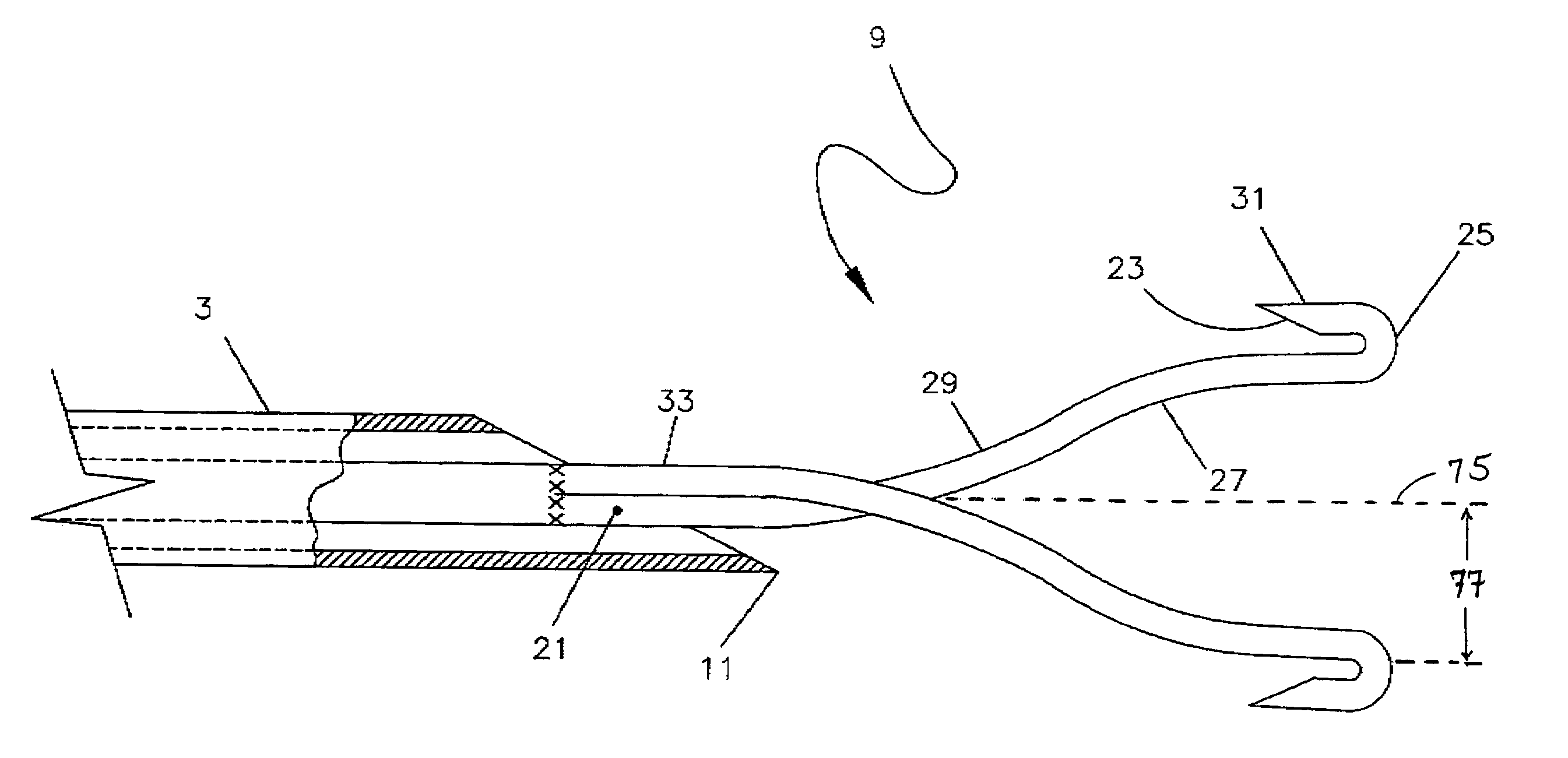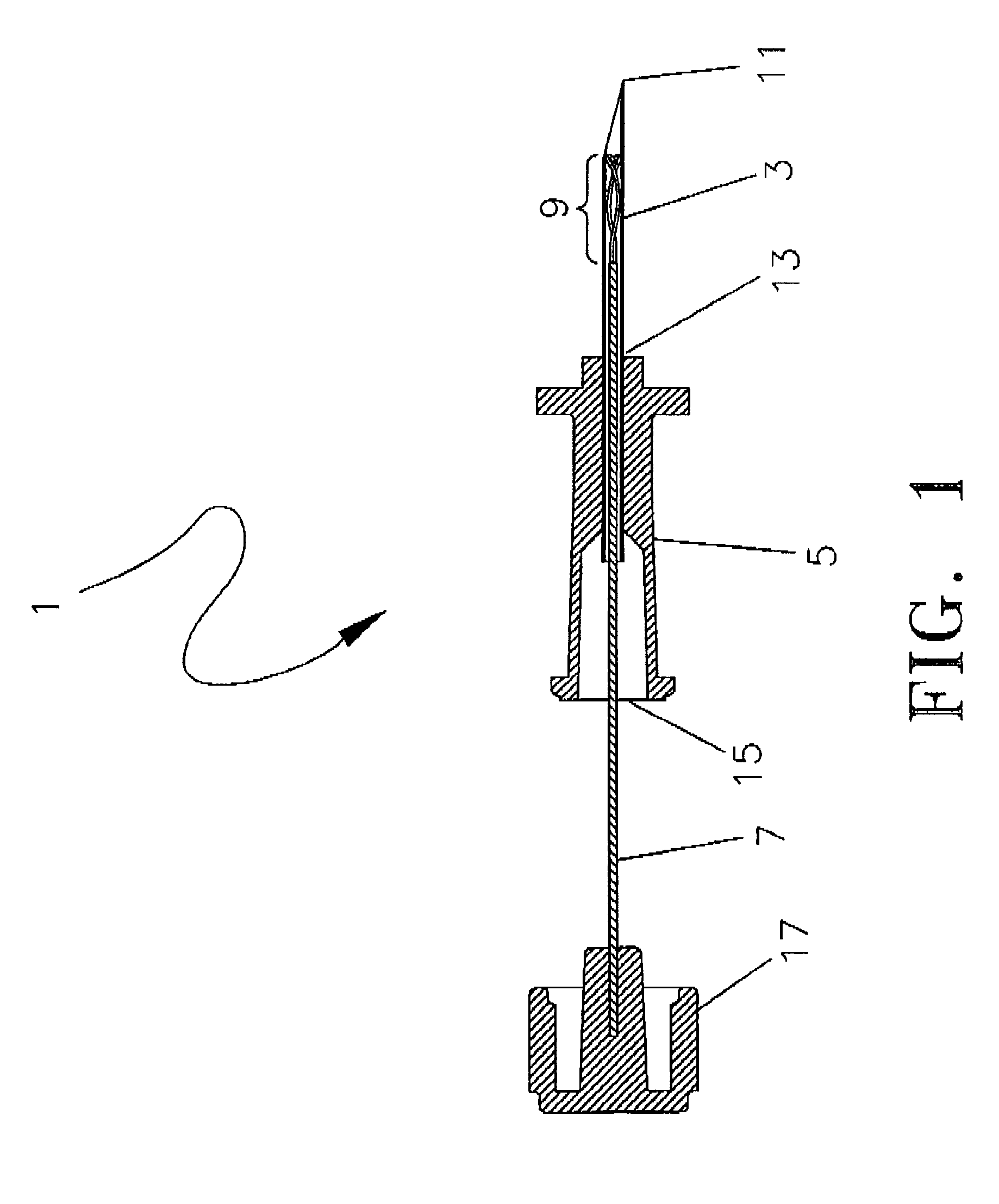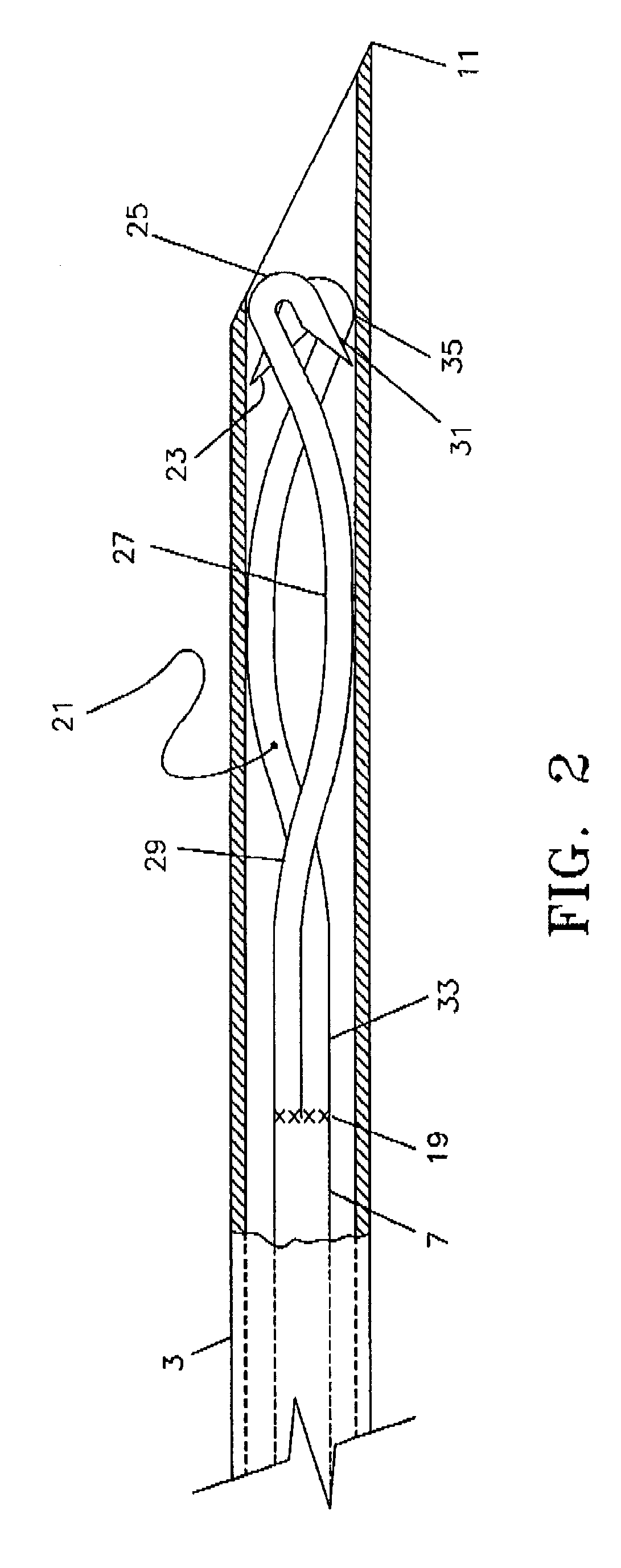Device and method for withdrawing a tubular body part
a tubular body and device technology, applied in the field of medical devices for withdrawing tubular body parts, can solve the problems of cosmetic deformities, pain in legs, medical complications, etc., and achieve the effect of less trauma to surrounding tissu
- Summary
- Abstract
- Description
- Claims
- Application Information
AI Technical Summary
Benefits of technology
Problems solved by technology
Method used
Image
Examples
Embodiment Construction
[0035]A preferred embodiment of the targeted phlebectomy device 1 is shown in FIG. 1. The assembly includes a needle 3, a hub 5, a deployment device such as a plunger rod 7 and an engaging element 9. In the embodiment shown, the needle 3 is a medical grade stainless-steel needle cannula with a sharp, beveled tip 11 at the distal portion of the needle 3. The proximal section of needle 3 extends into and is secured to a through lumen at opening 13 of the hub 5. A standard adhesive or other bonding method can be used to securely attach the needle 3 to the through lumen opening 13. The needle 3 typically extends distally beyond the through lumen opening 13 by approximately 2.5 cm, although various needle 3 cannula lengths can be used.
[0036]Housed within the lumen of the needle 3 is the deployable engaging element 9. The engaging element 9 is attached to the distal section of the plunger rod 7 through either a welding or bonding process, as is well known in the art. The weld section of t...
PUM
 Login to View More
Login to View More Abstract
Description
Claims
Application Information
 Login to View More
Login to View More - R&D
- Intellectual Property
- Life Sciences
- Materials
- Tech Scout
- Unparalleled Data Quality
- Higher Quality Content
- 60% Fewer Hallucinations
Browse by: Latest US Patents, China's latest patents, Technical Efficacy Thesaurus, Application Domain, Technology Topic, Popular Technical Reports.
© 2025 PatSnap. All rights reserved.Legal|Privacy policy|Modern Slavery Act Transparency Statement|Sitemap|About US| Contact US: help@patsnap.com



